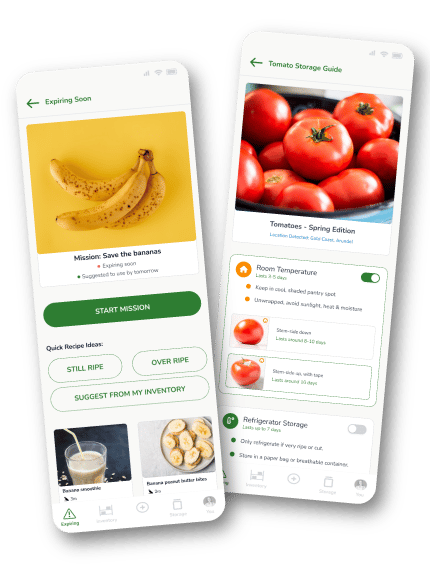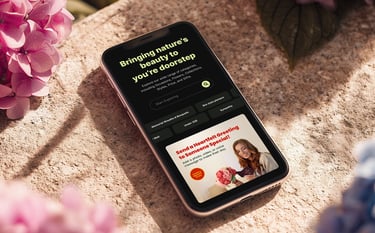
Executive Summary
Save Bites is a service design initiative tackling household food waste among young adults, starting with the most wasted category: fruits and vegetables. At its heart is Spudsy, a friendly AI companion that transforms the chore of waste reduction into an engaging experience.
Moving beyond simple tracking, Spudsy uses conversational design and micro-interactions to motivate users through three core features: a digital Inventory, Expiring Soon alerts, and a Storage Knowledge Guide. This human-centered approach bridges the gap between intention and action, reducing waste at its source.
By empowering individuals, Save Bites creates a scalable model that indirectly contributes to Australia's National 2030 Food Waste Strategy and aligns with the global Sustainable Development Goal 12.3.
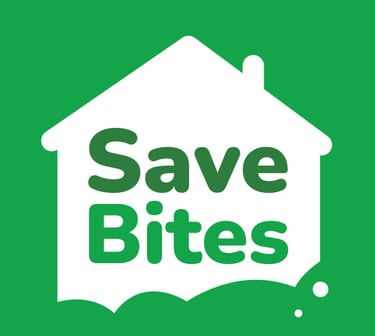

Role: UX Researcher · Behavioural Research · User-Centered Design · Conversational AI · Lead Designer · Service Design
Tools: Figma · Figma Make · Fig Jam · Miro · Google Vids · Illustrator
Project Type: Mobile App
Timeline: March - Oct 2025
The Challenge
Australian households discard 2.5 million tonnes of edible food annually. My research revealed a core behavioural problem: the "guilt-inaction paradox," where young adults feel guilty about waste but fail to change their habits due to daily barriers.
The key problems identified were:
Forgotten food leading to spoilage
Storage Knowledge gaps
Impulse purchasing
Process & Methodology
I employed the Double Diamond model (Design Council, 2025) as the overarching design framework, structuring a rigorous, human-centered process from discovery to a developed solution.
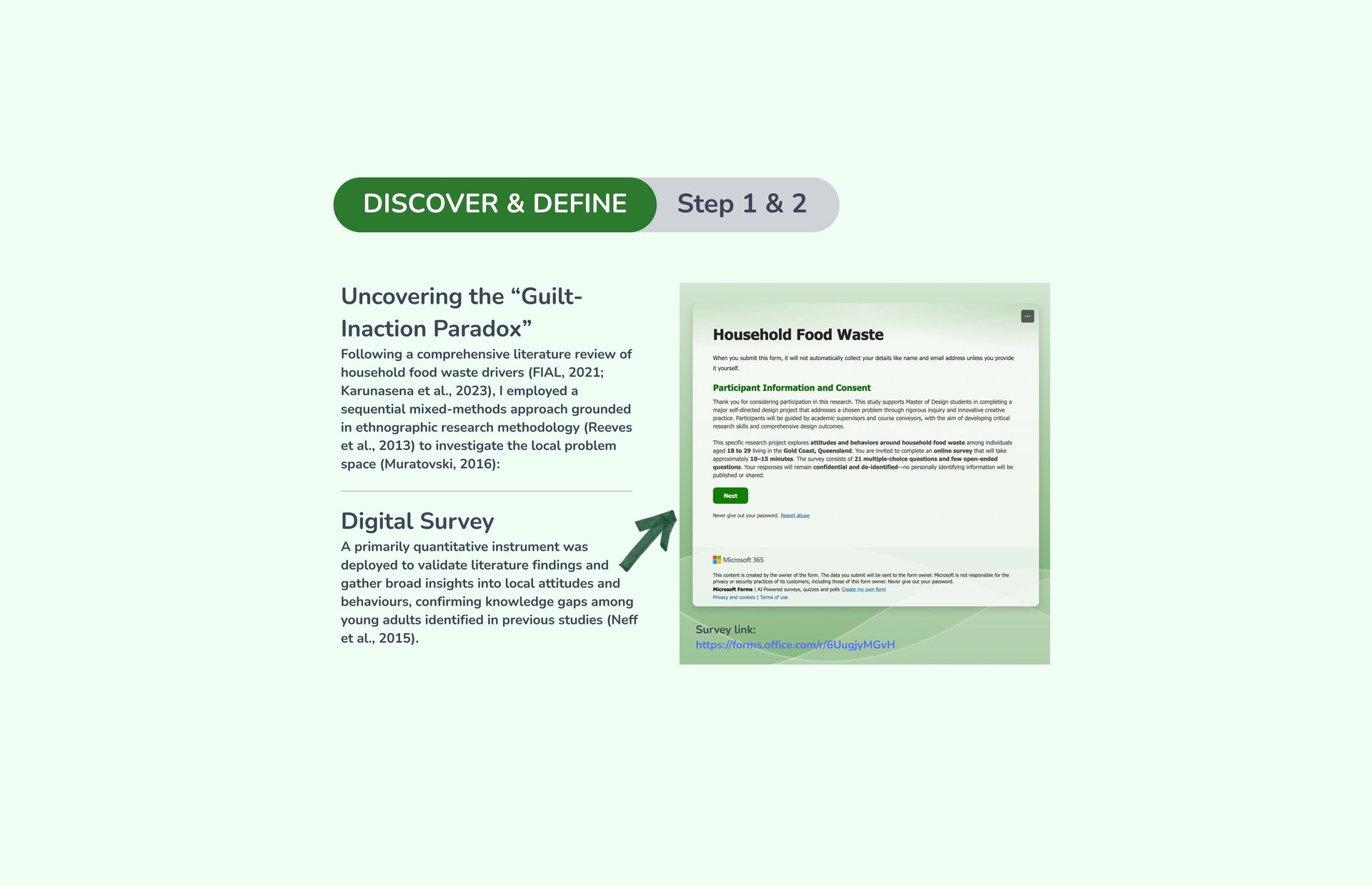
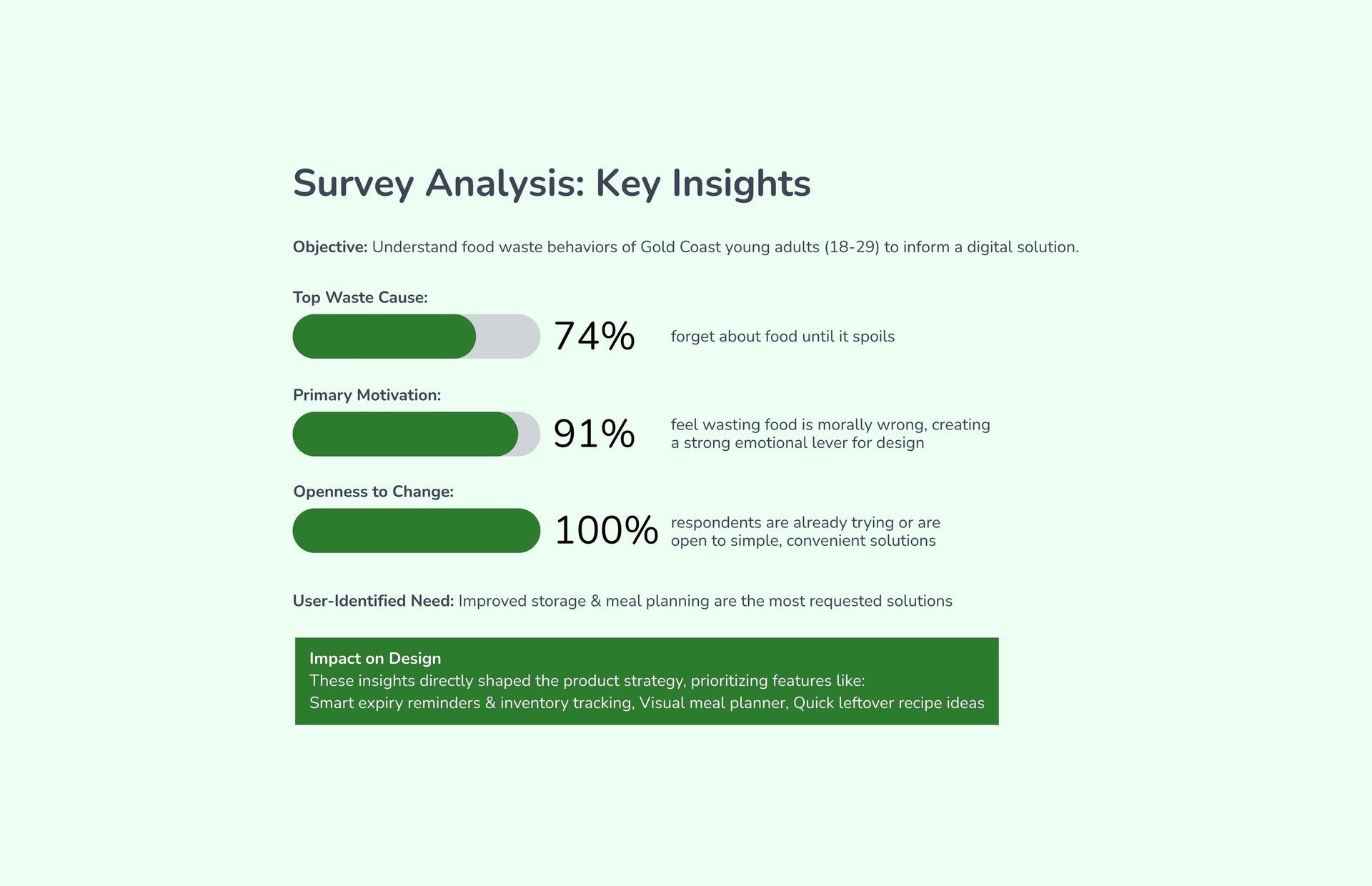
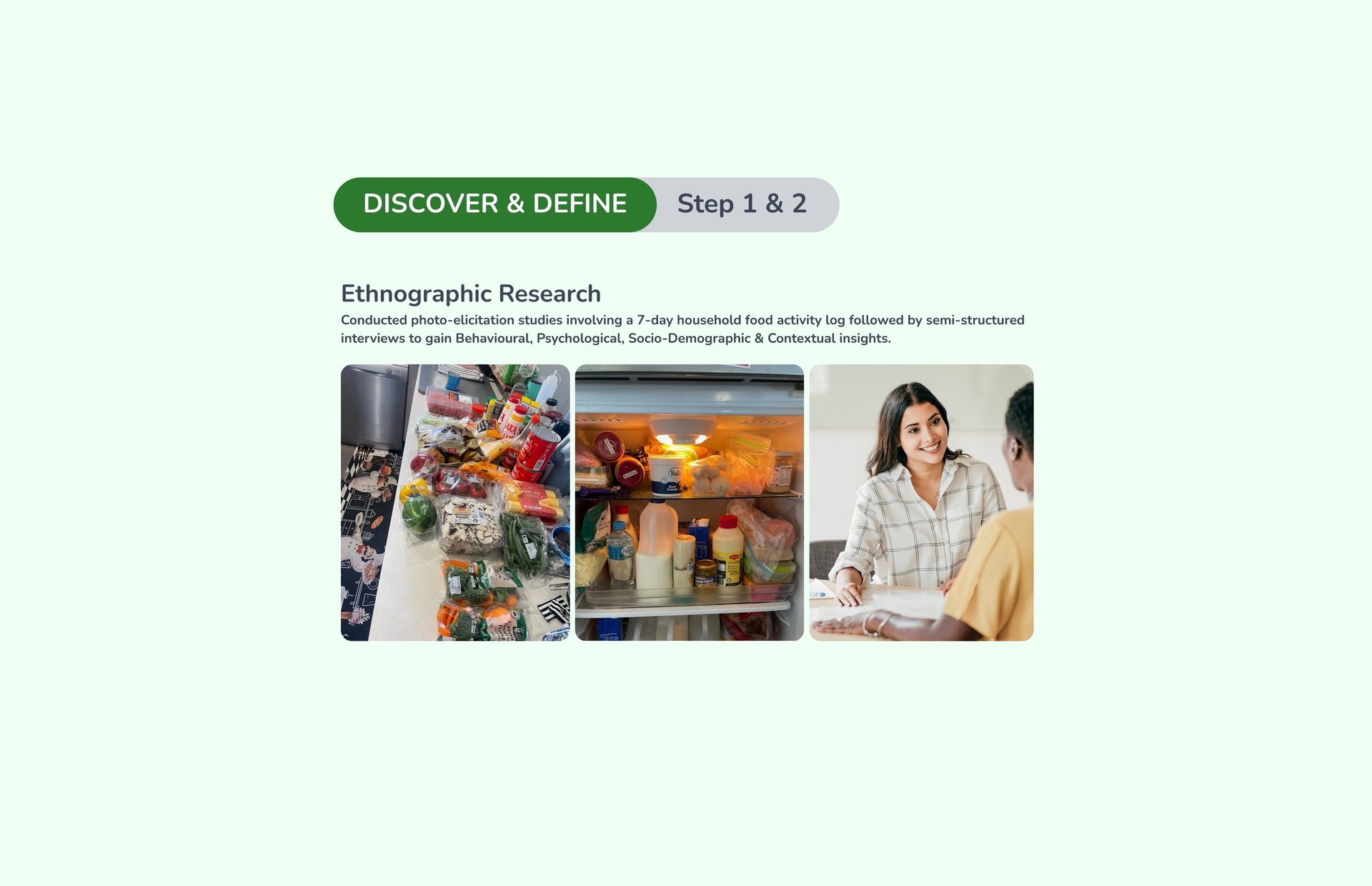
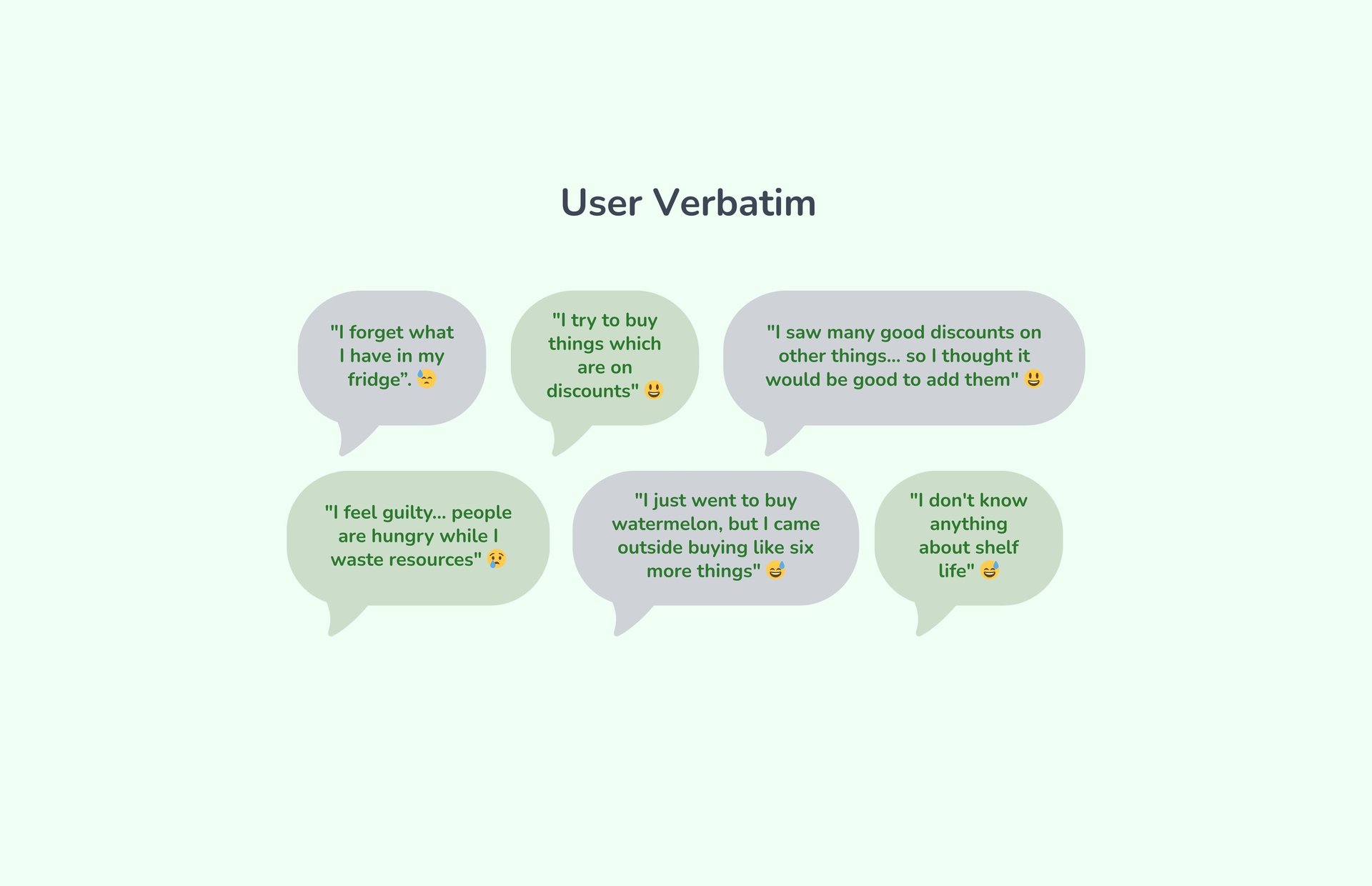
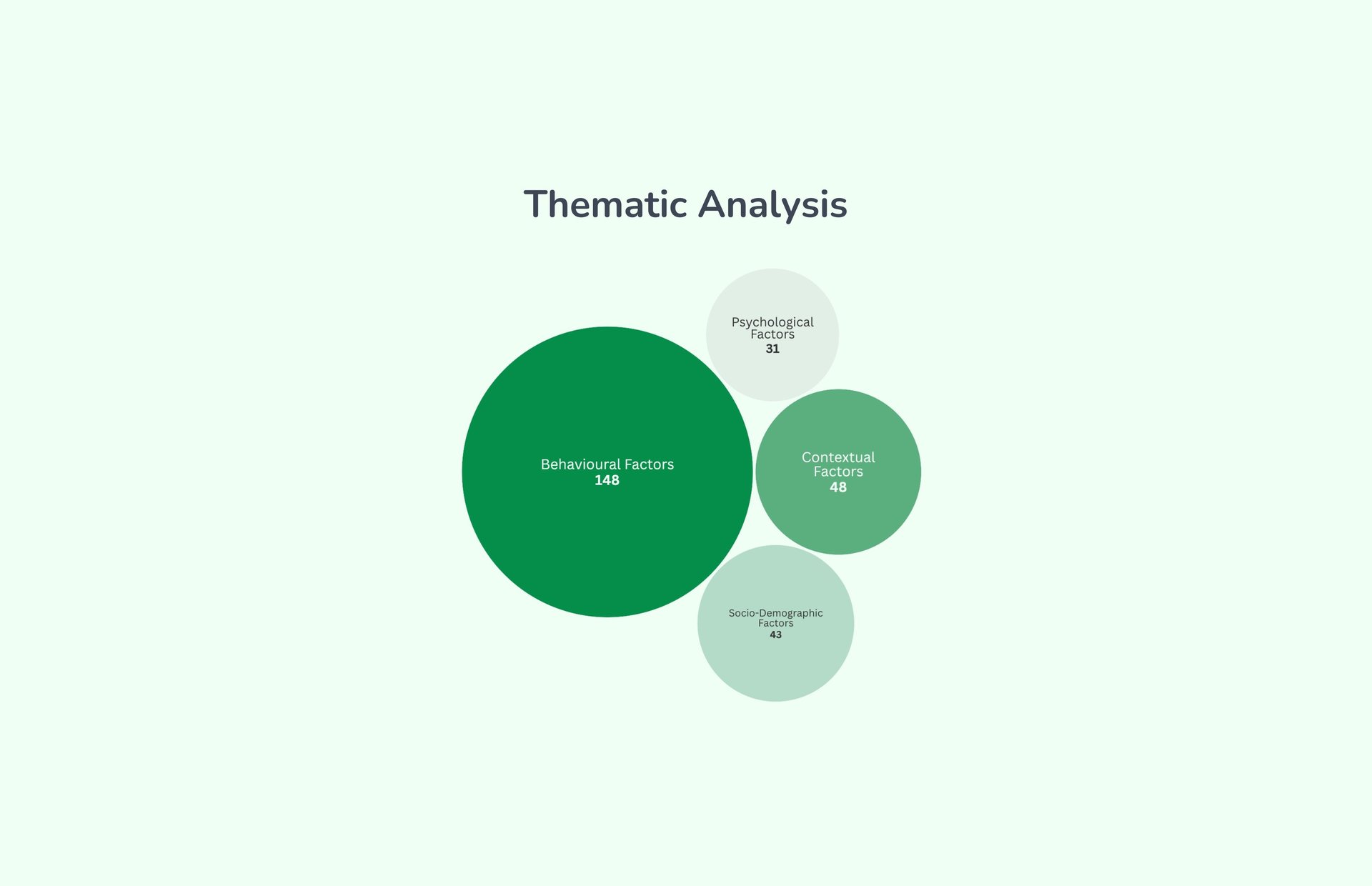
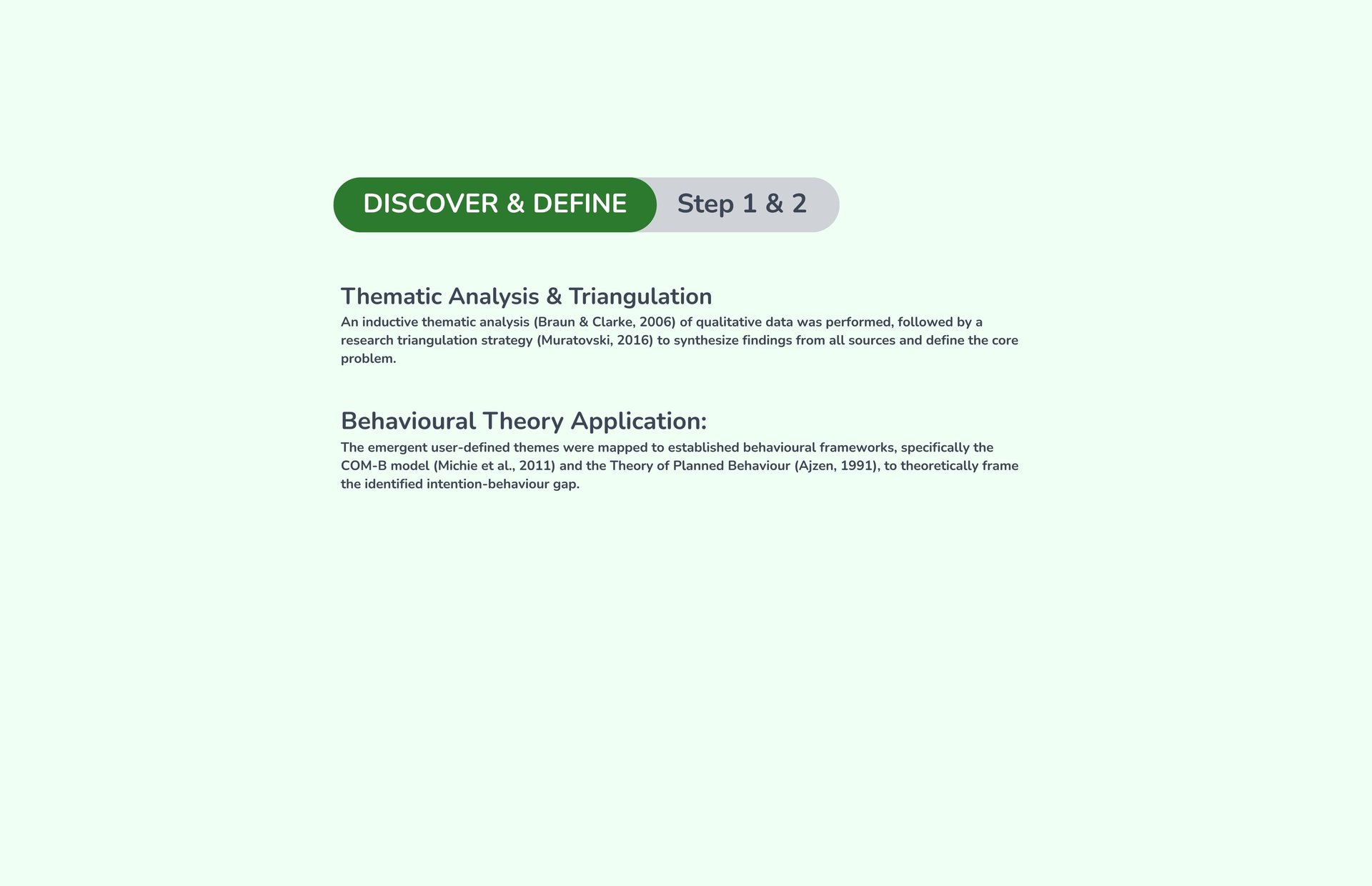
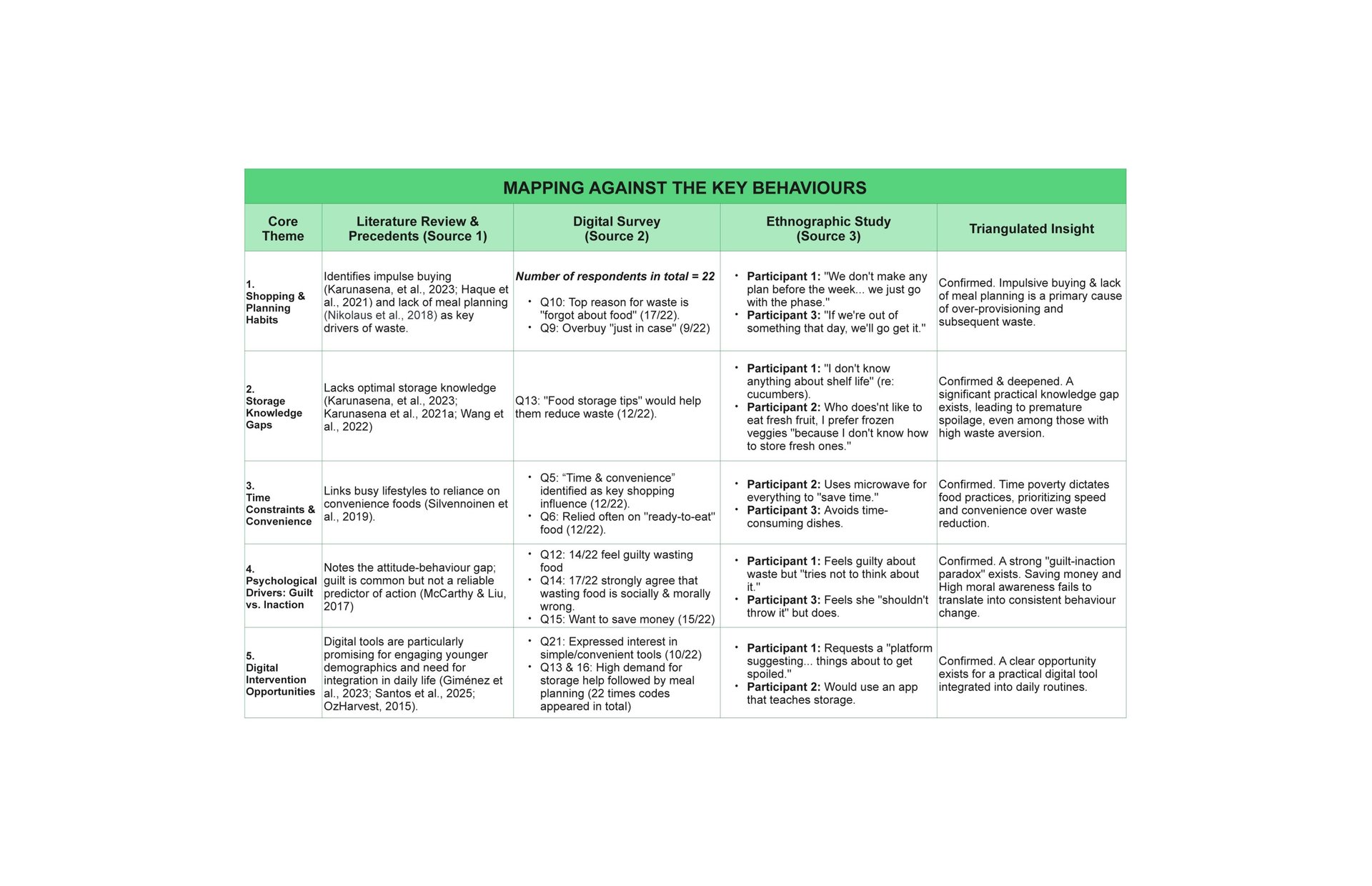


A Theory-Informed Solution
This phase was guided by a User-Centered Design (UCD) framework to translate research insights into a tangible design solution:
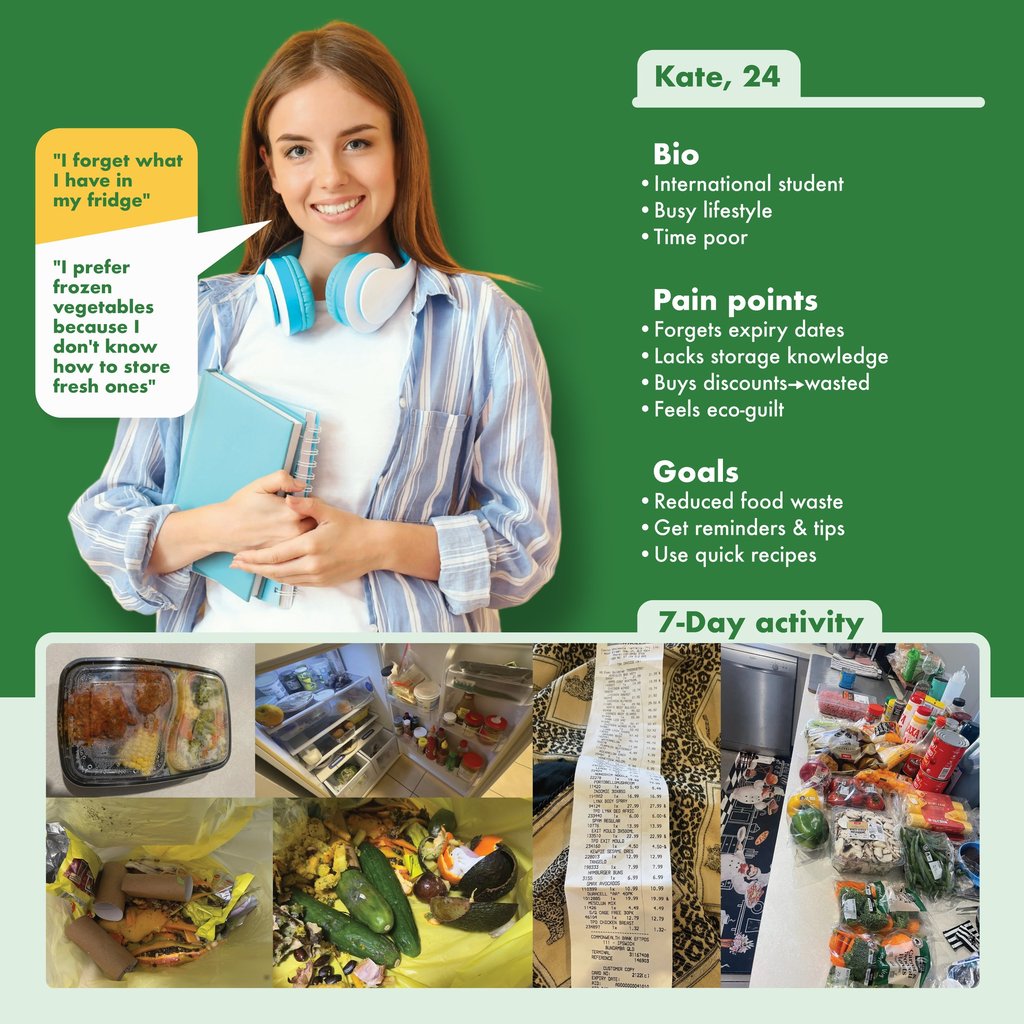

Persona Development
Synthesized triangulated research data into an evidence-based primary persona, "Kate," to ground design decisions in user needs.
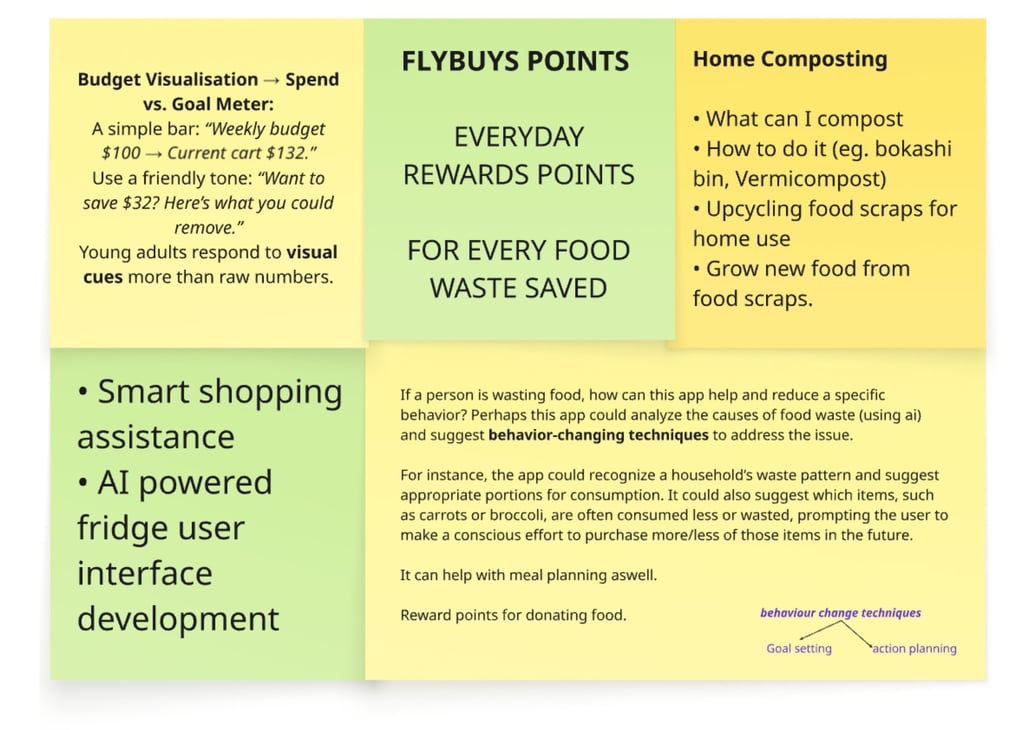

Brainstorming
Detailed Brainstorming on Miro↗
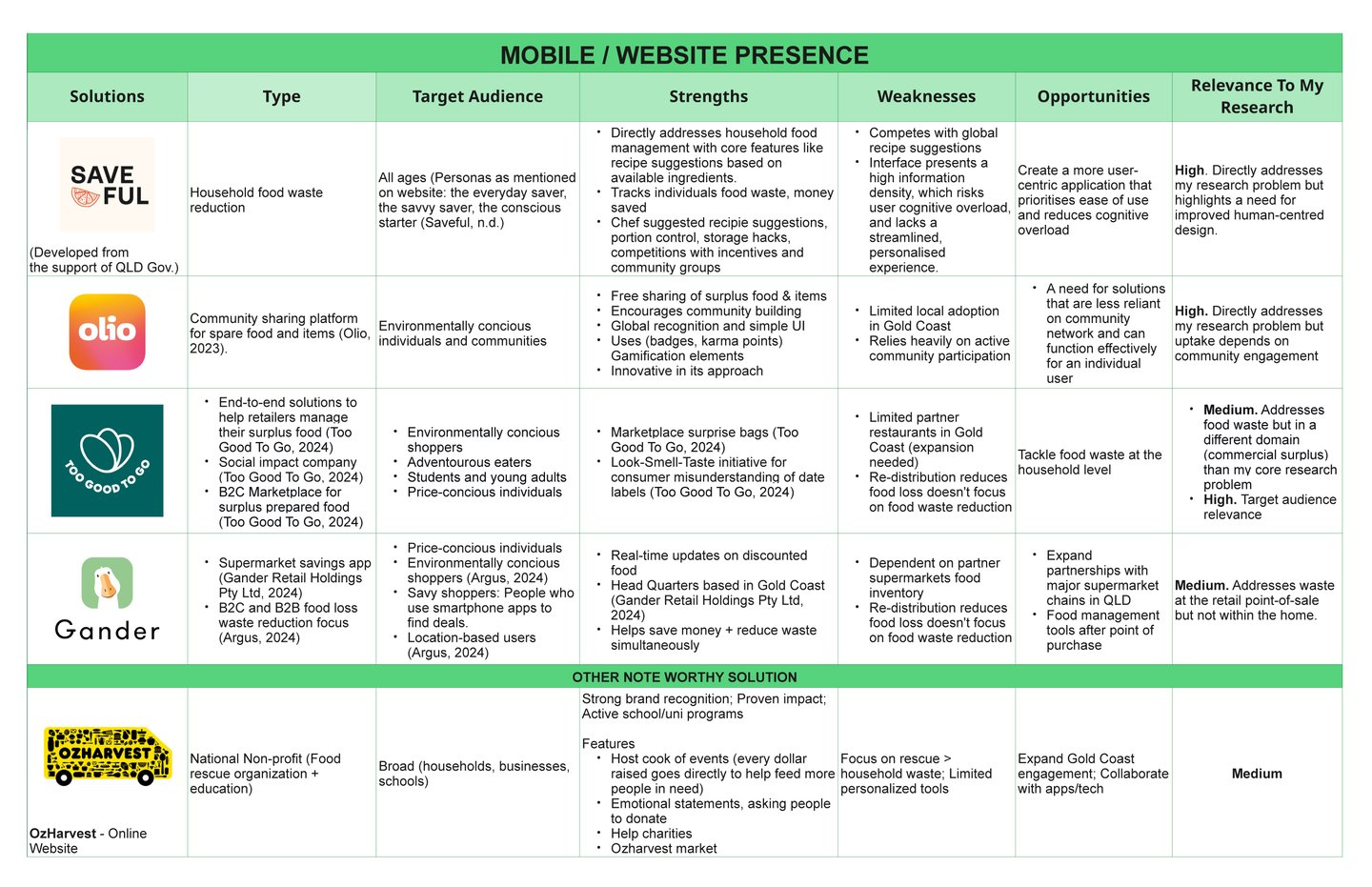

Competitor Analysis
Initial Concept - Iterative Prototyping
Evolved the design from sketches to a medium-fidelity interactive prototype.
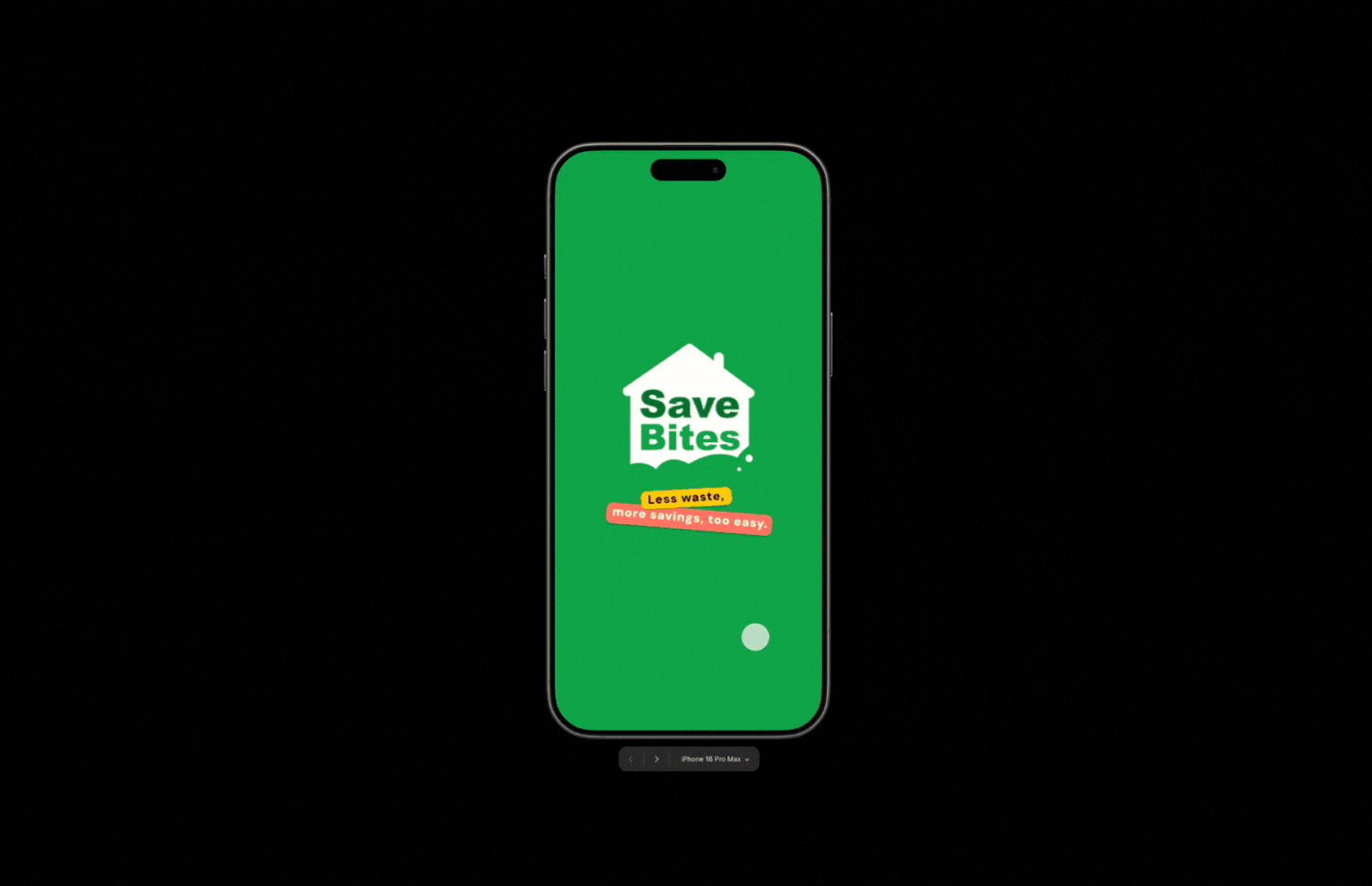
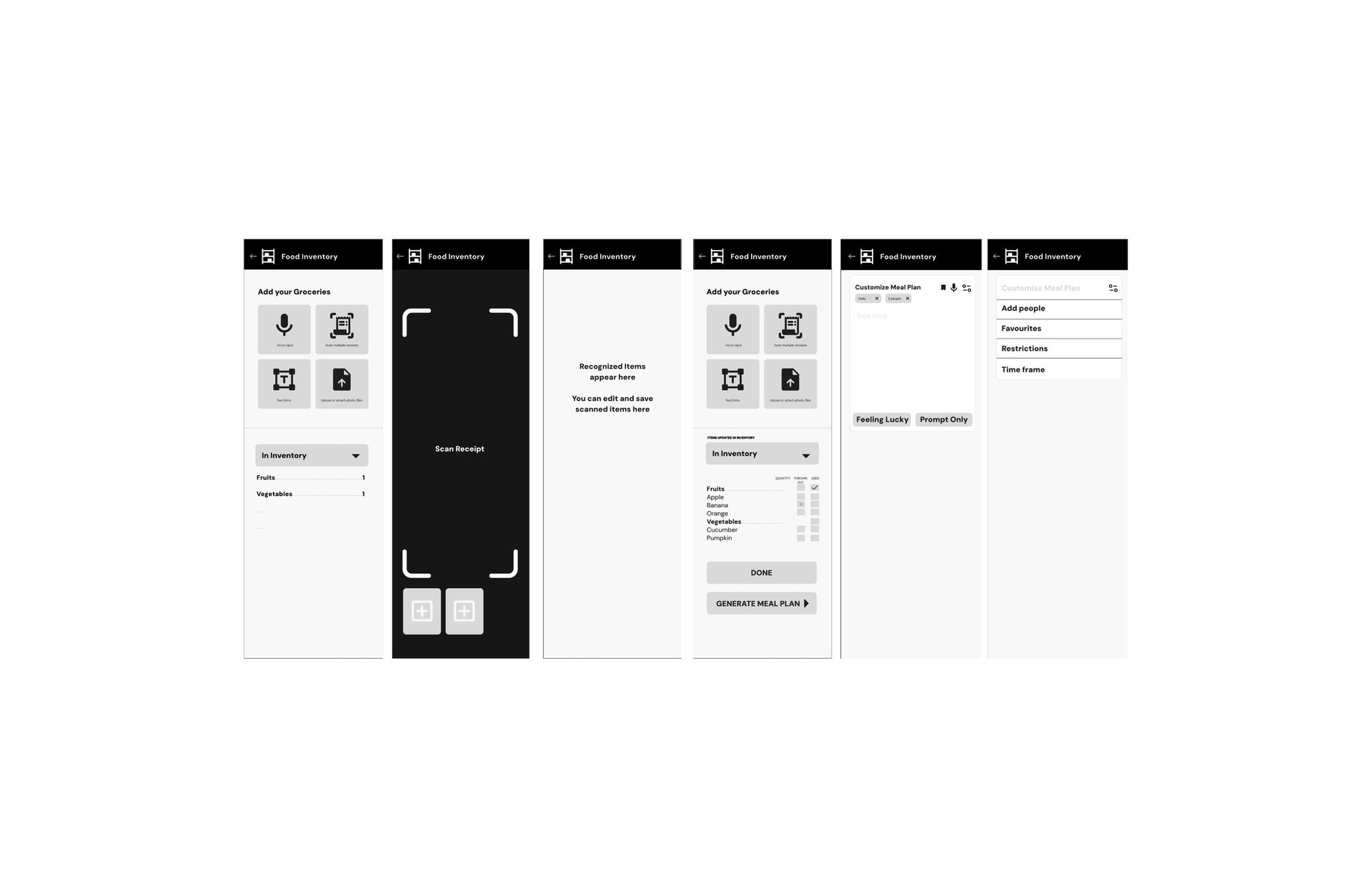
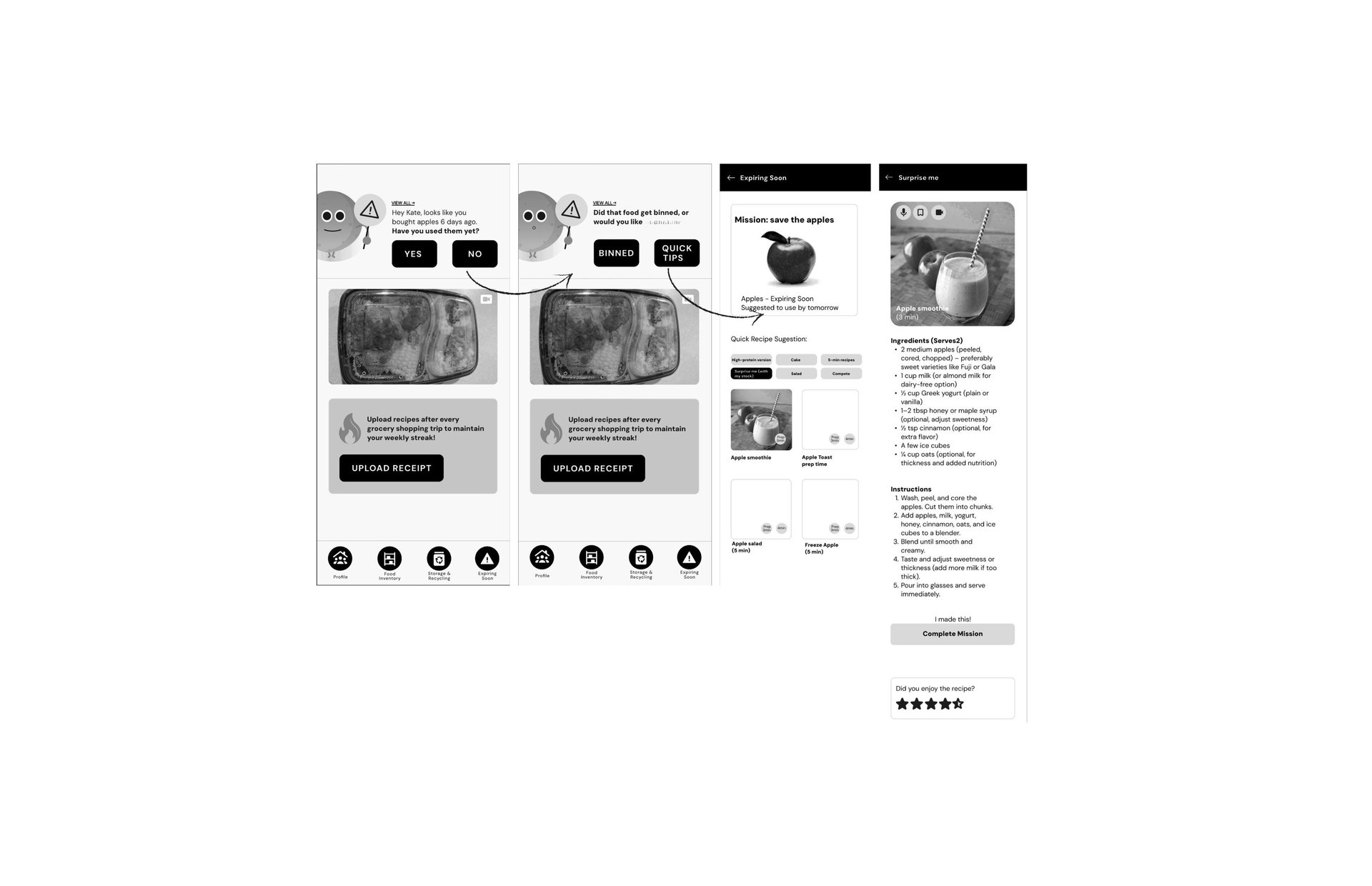
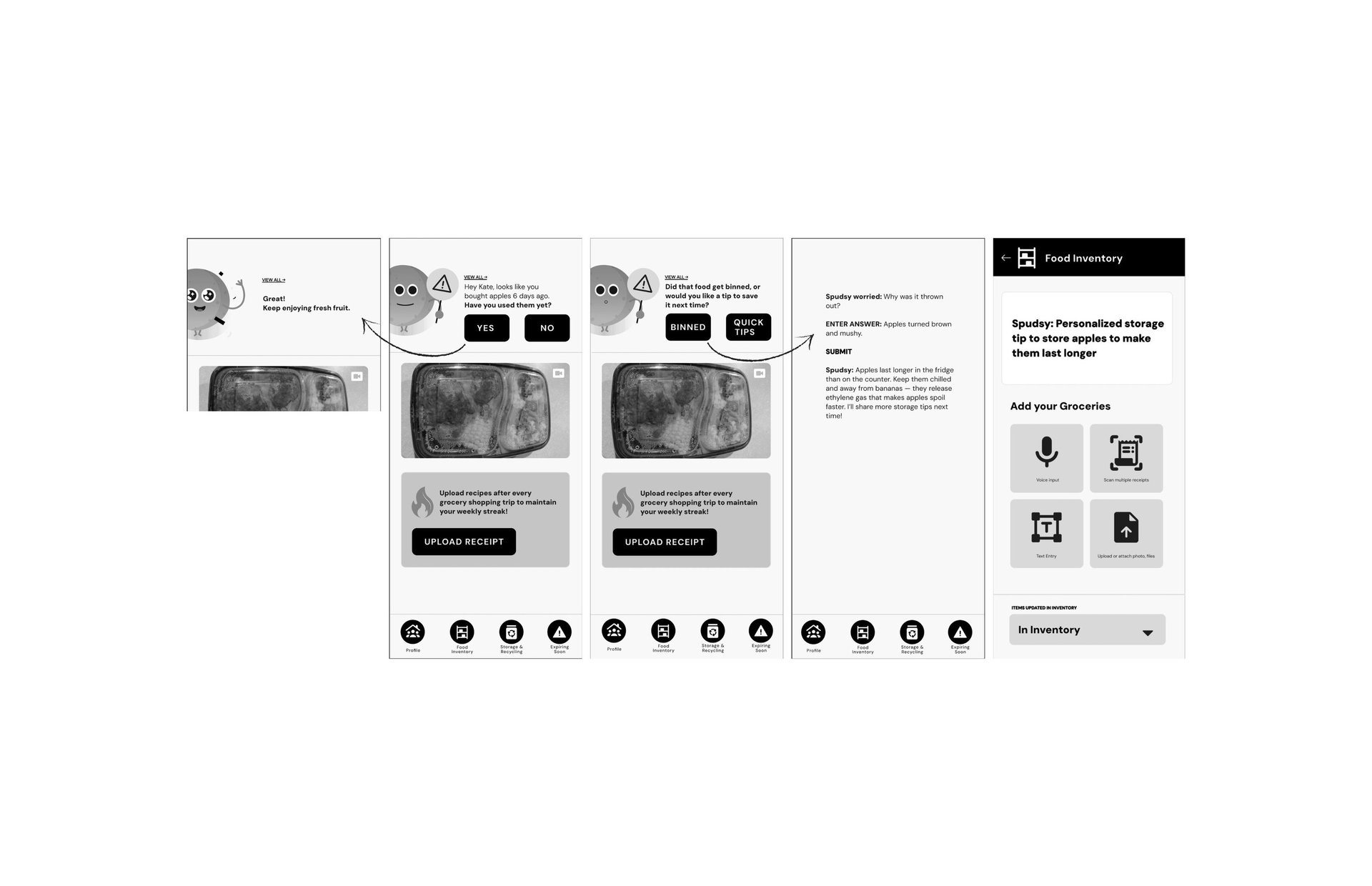
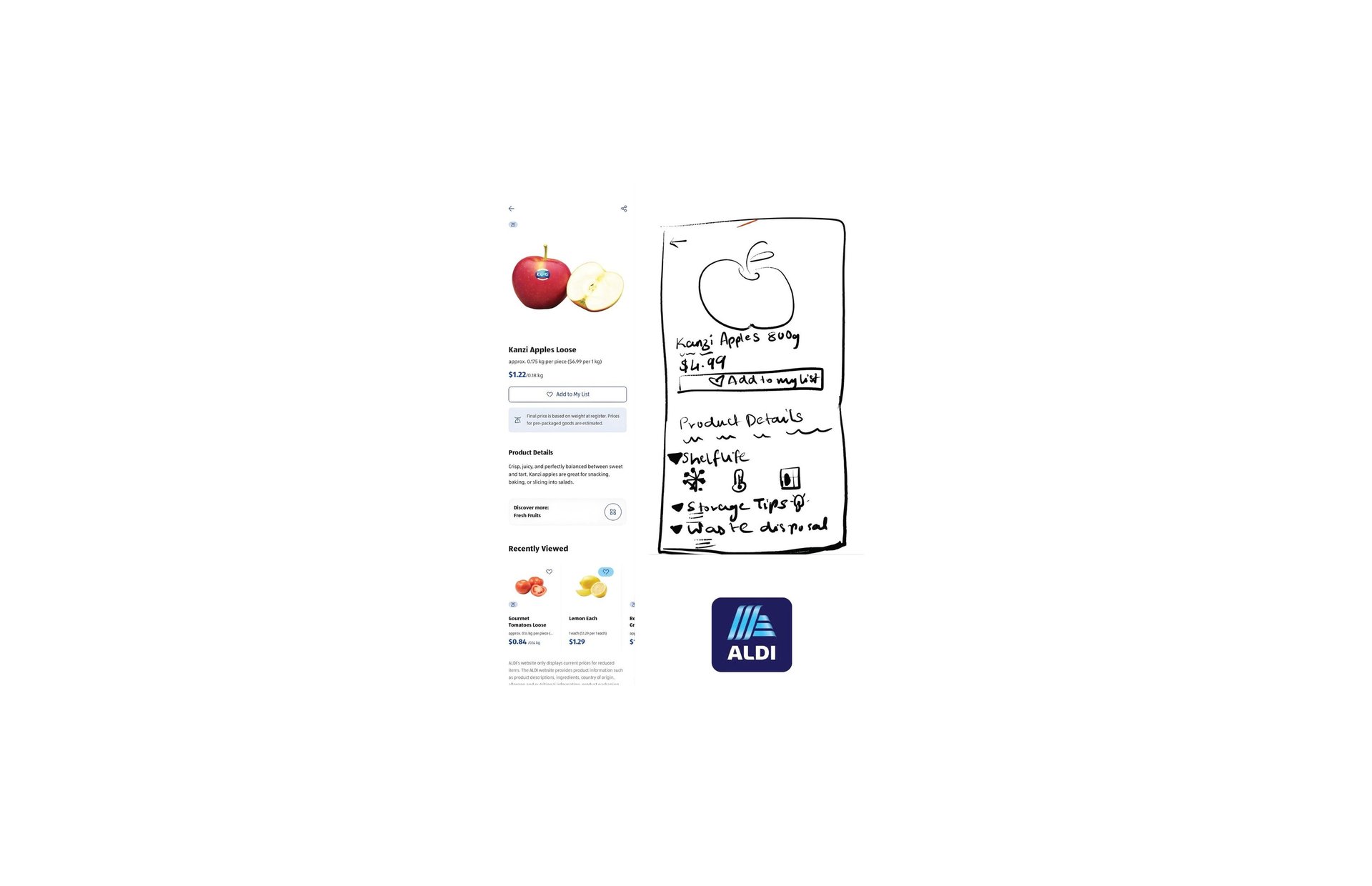
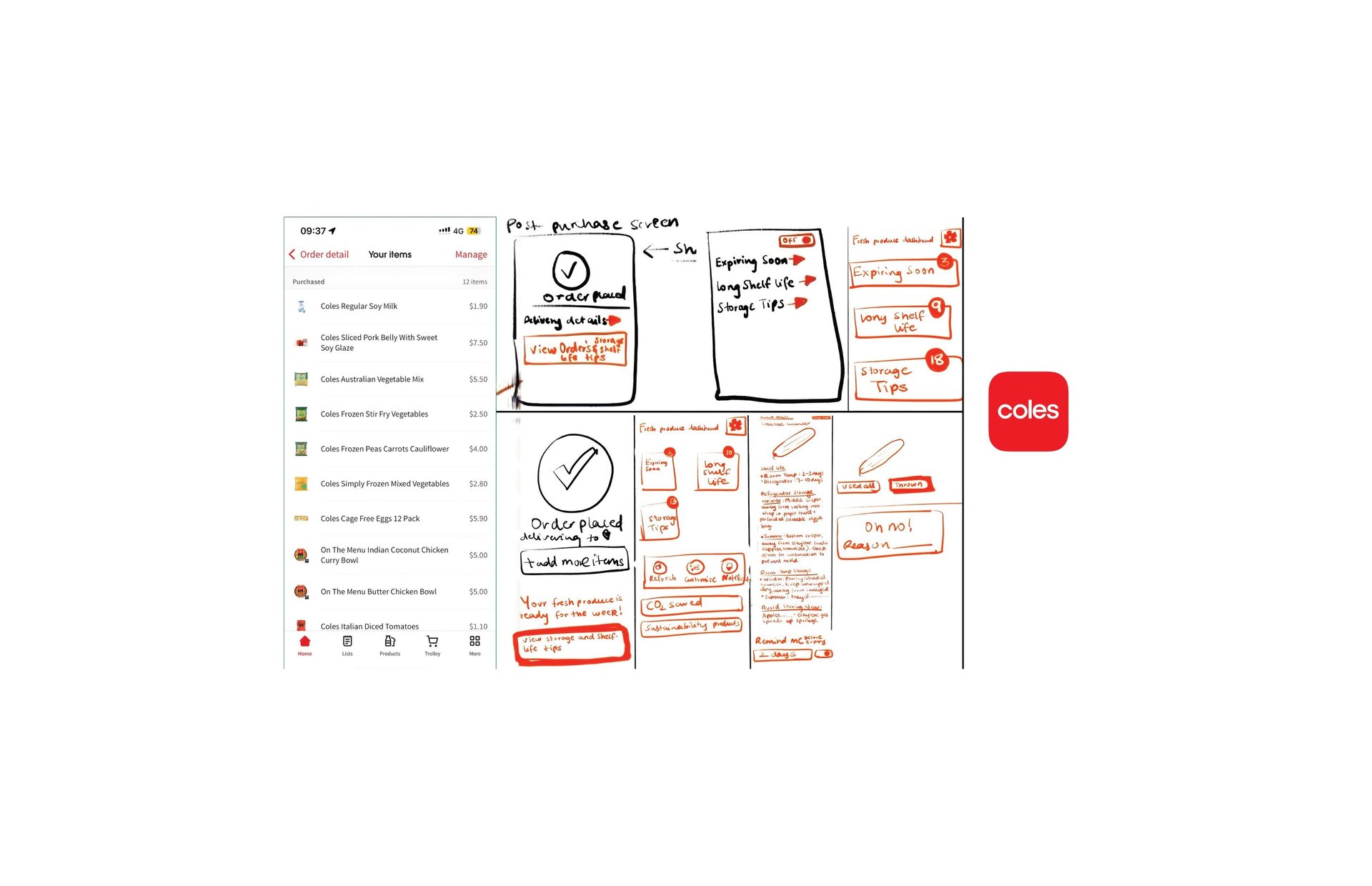
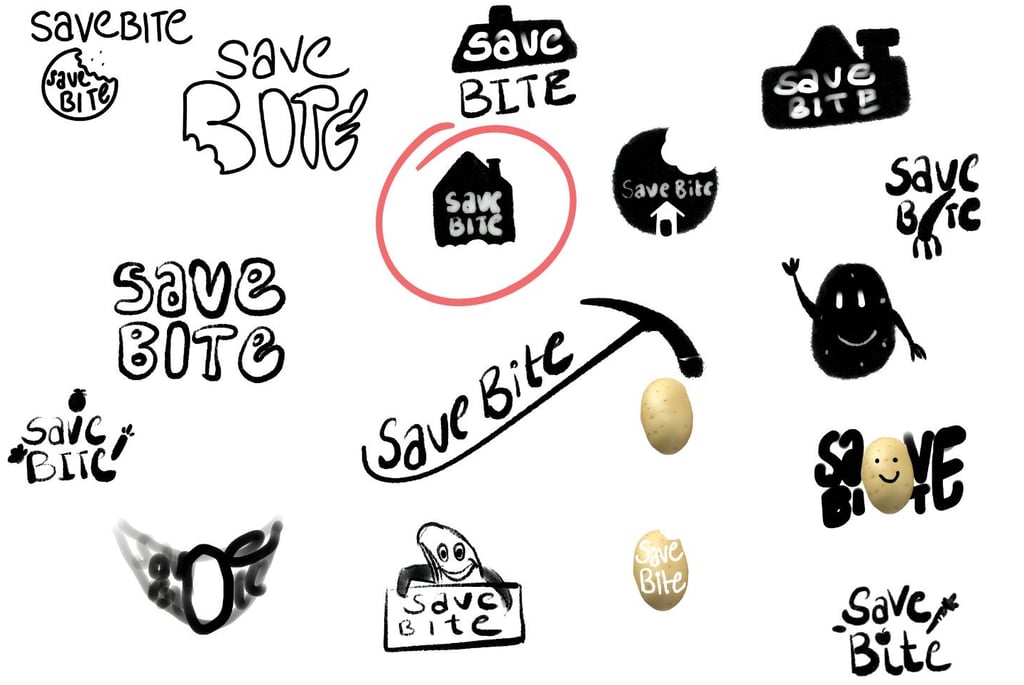

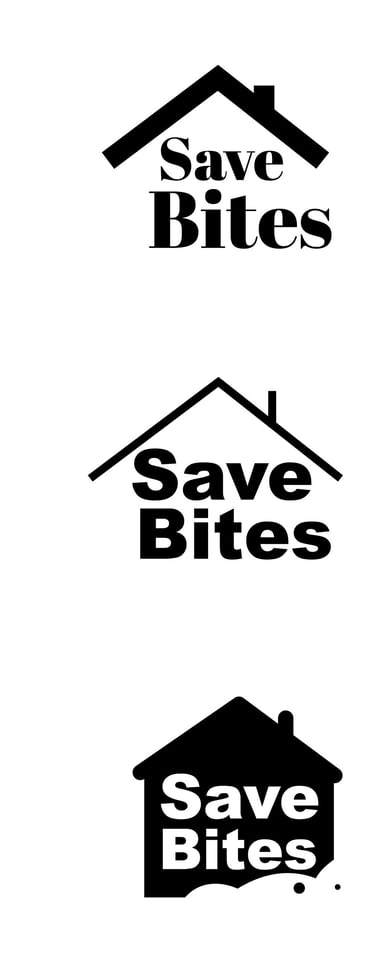

The Solution
Save Bites is a mobile application that creates a direct feedback loop between food ownership and conscious consumption. It's uniquely enhanced by "Spudsy," an emotional companion character, who uses friendly nudges to build lasting engagement.
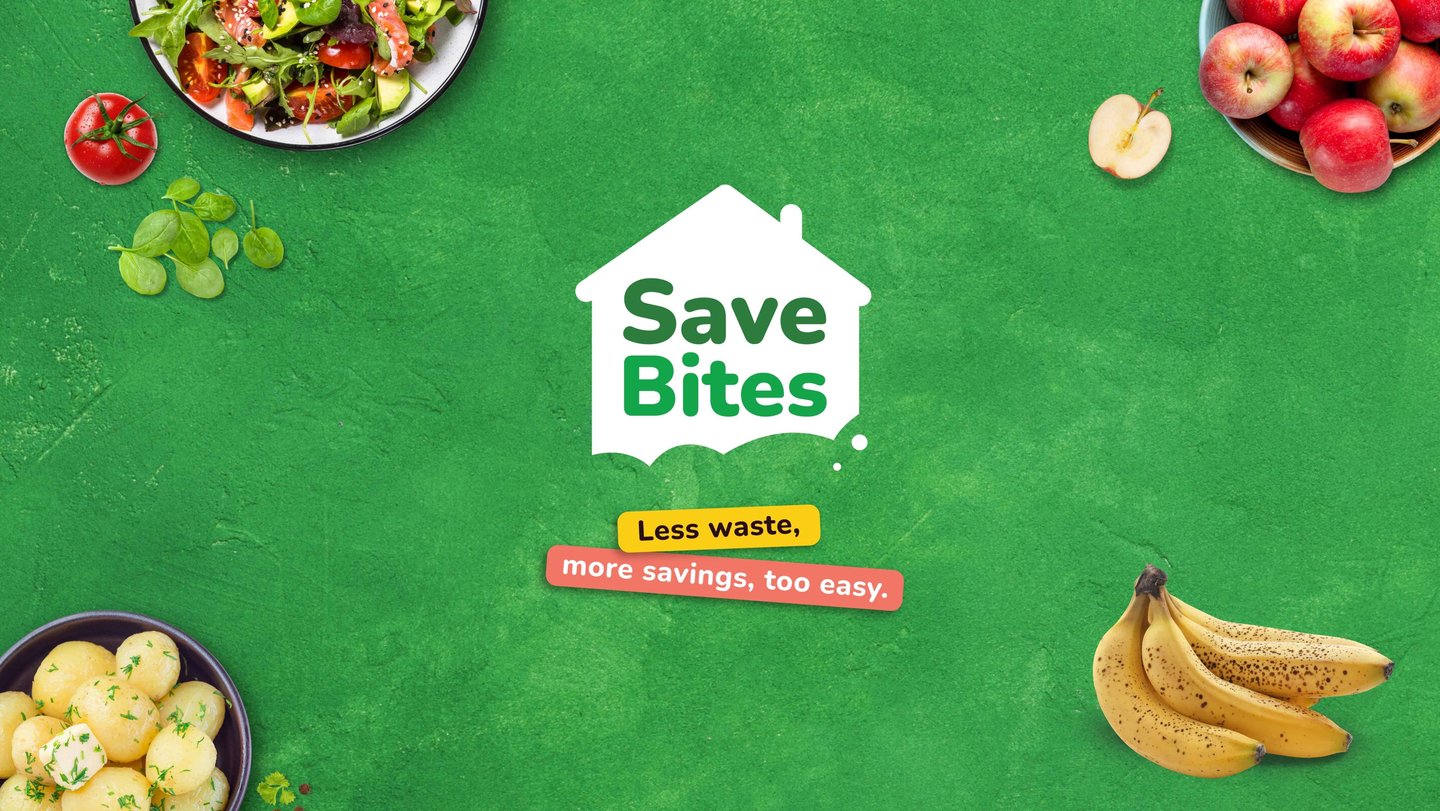

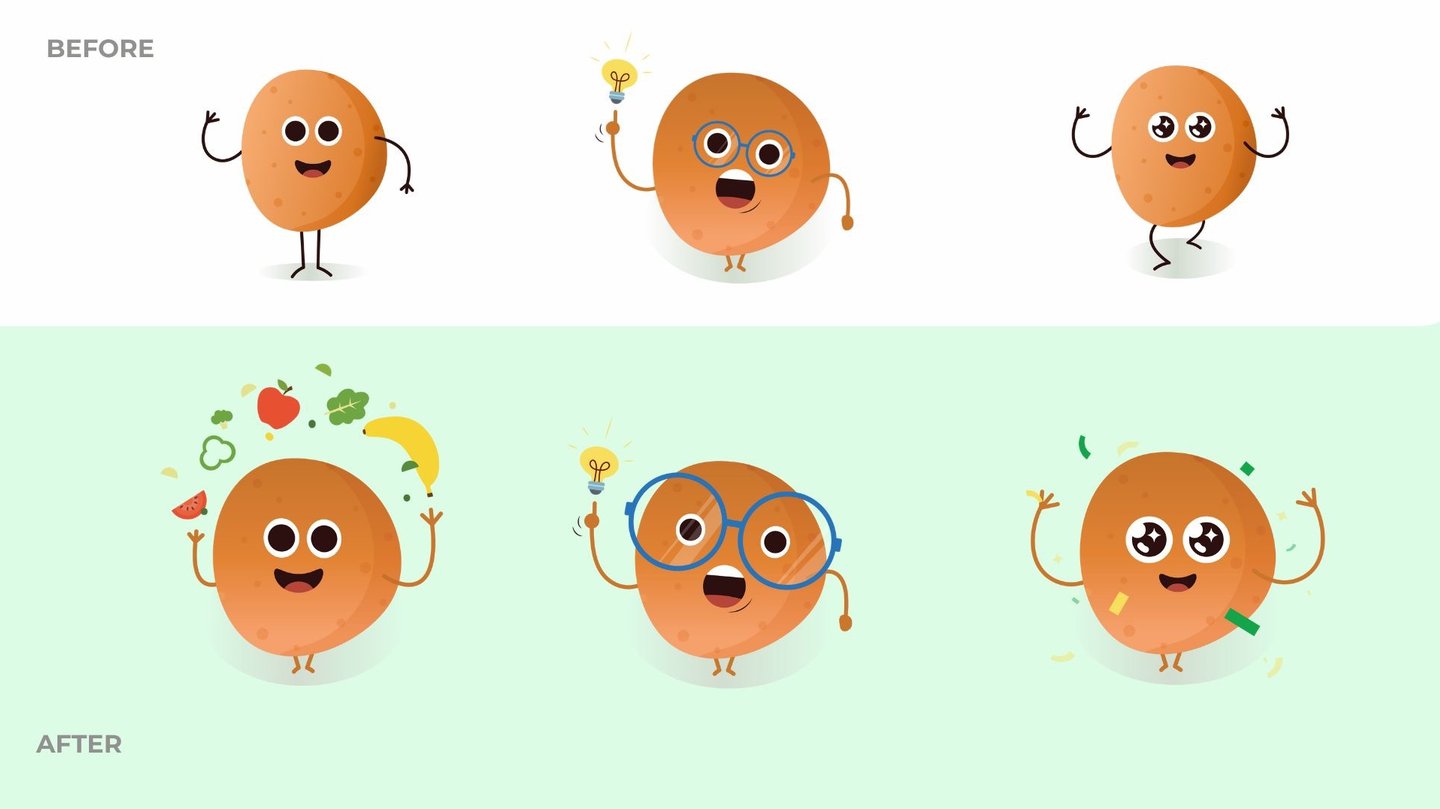

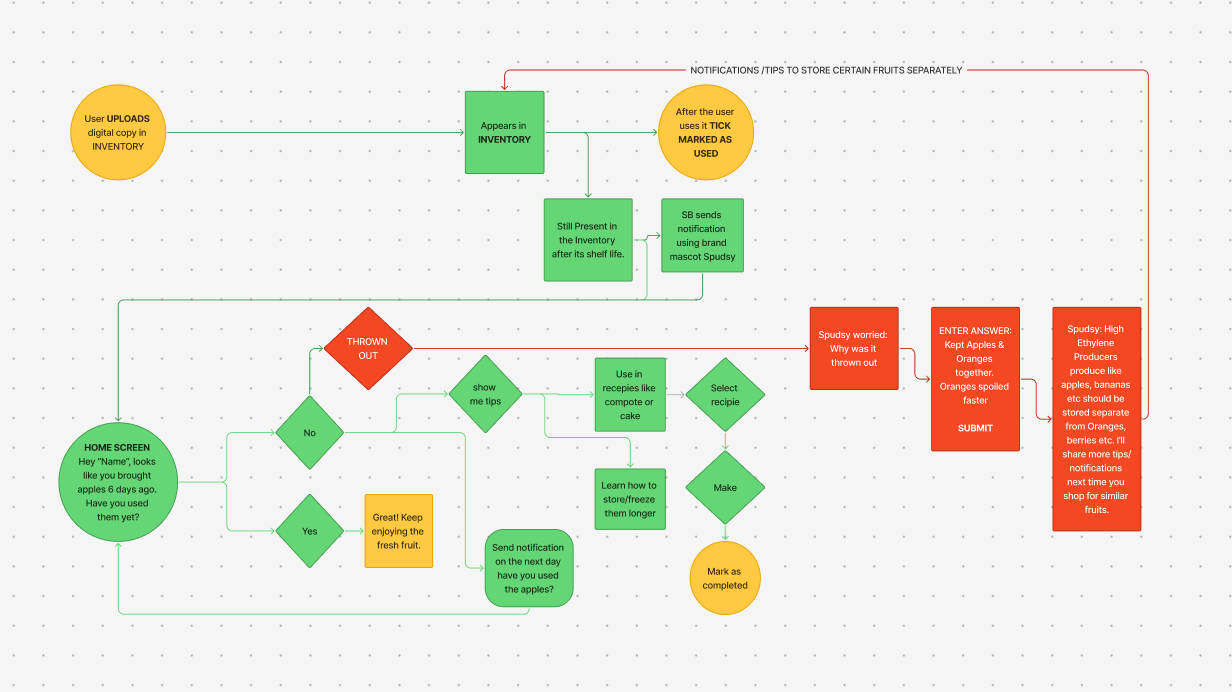

Character Design & Development
Initial User Flow - Managing 'Expiring Soon' Items
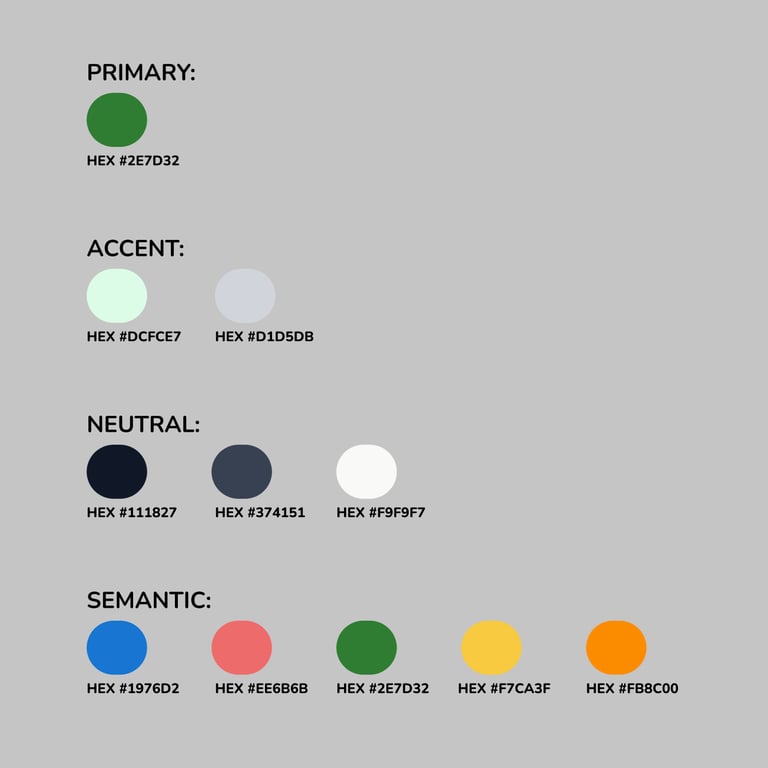
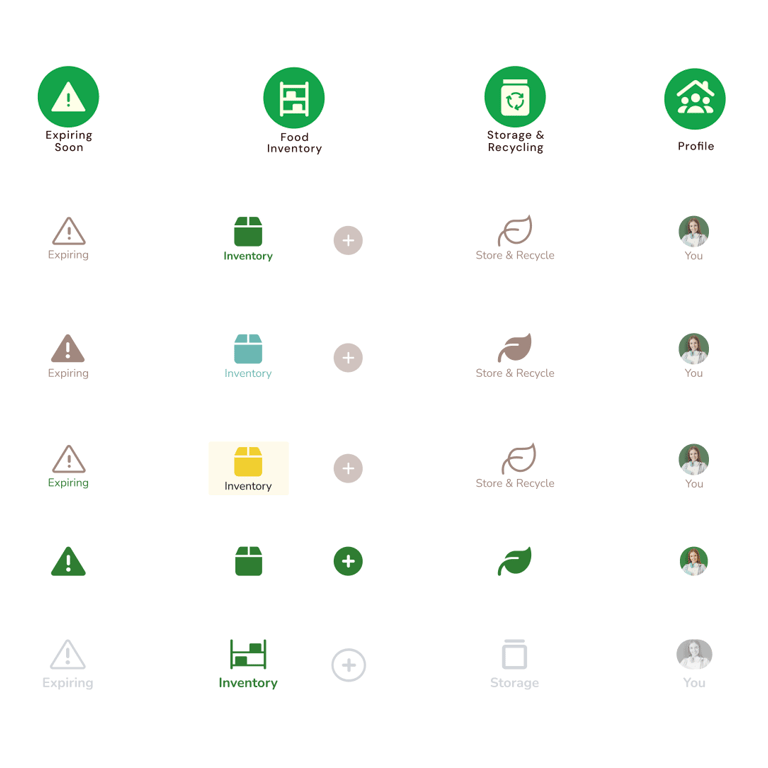

Figma Screen Grab Showing Data Collection Screens Which in Future Will Be Used to Personalise the Interface to the User (Currently Not Included in the App).
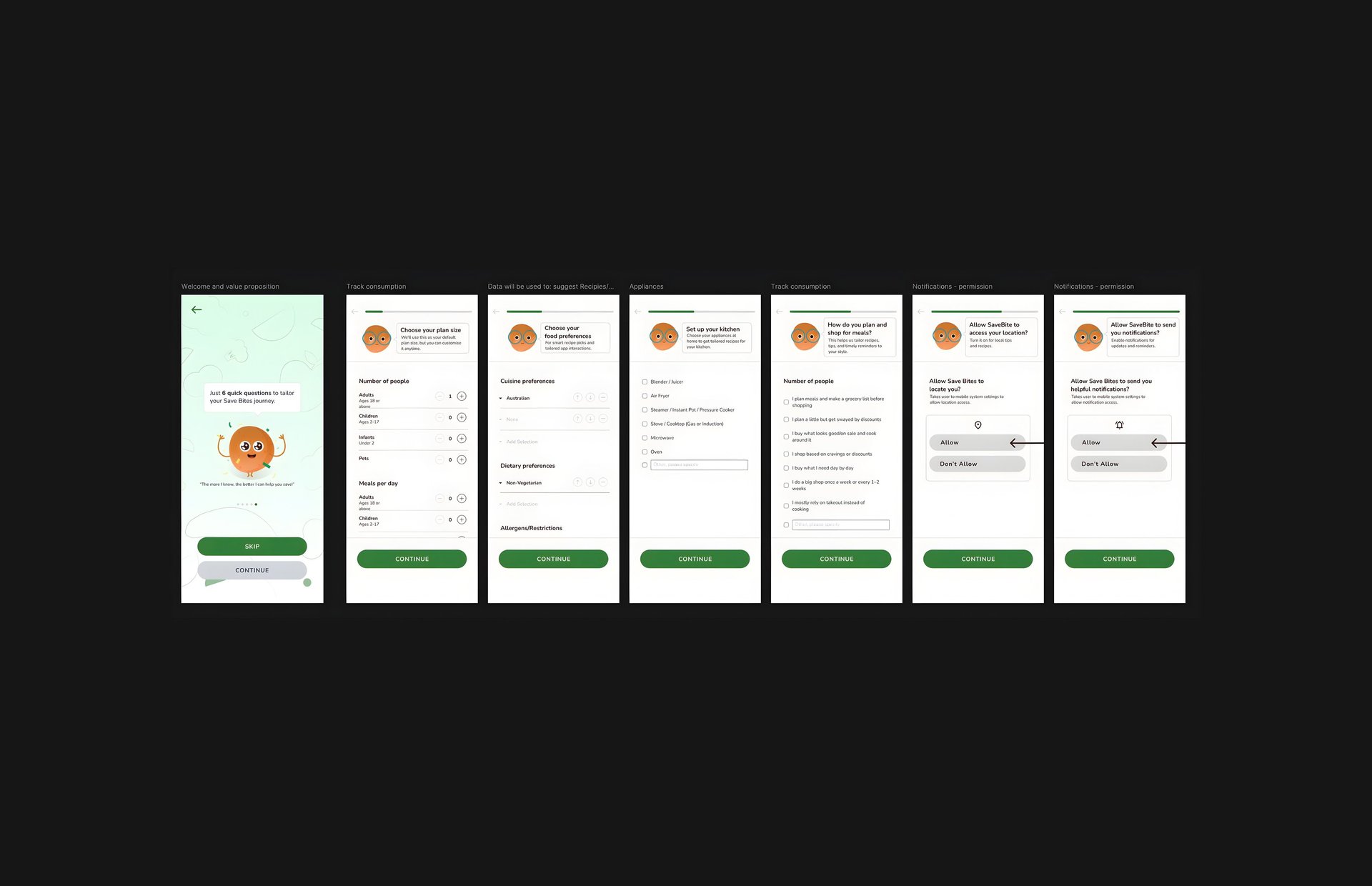
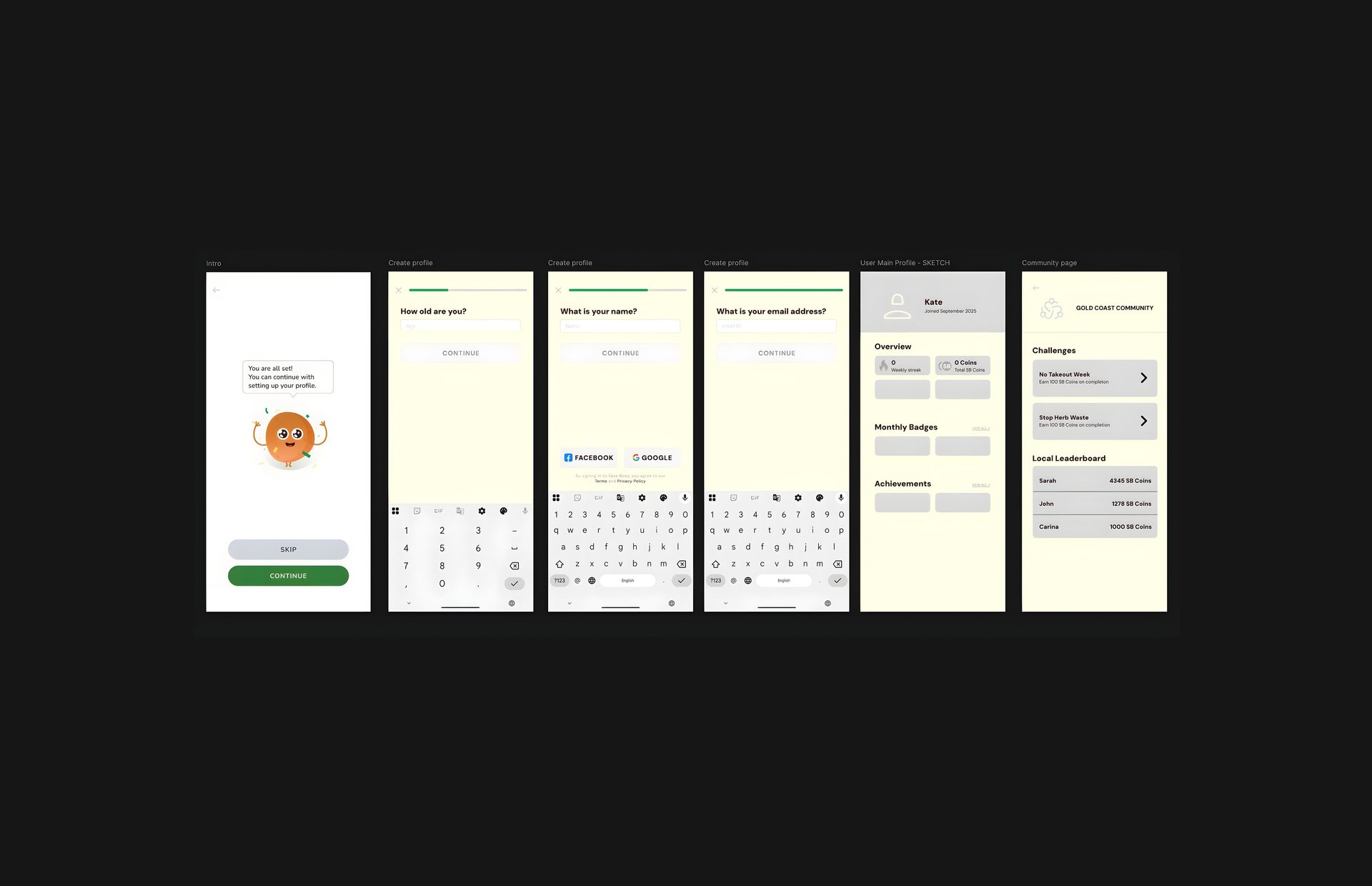
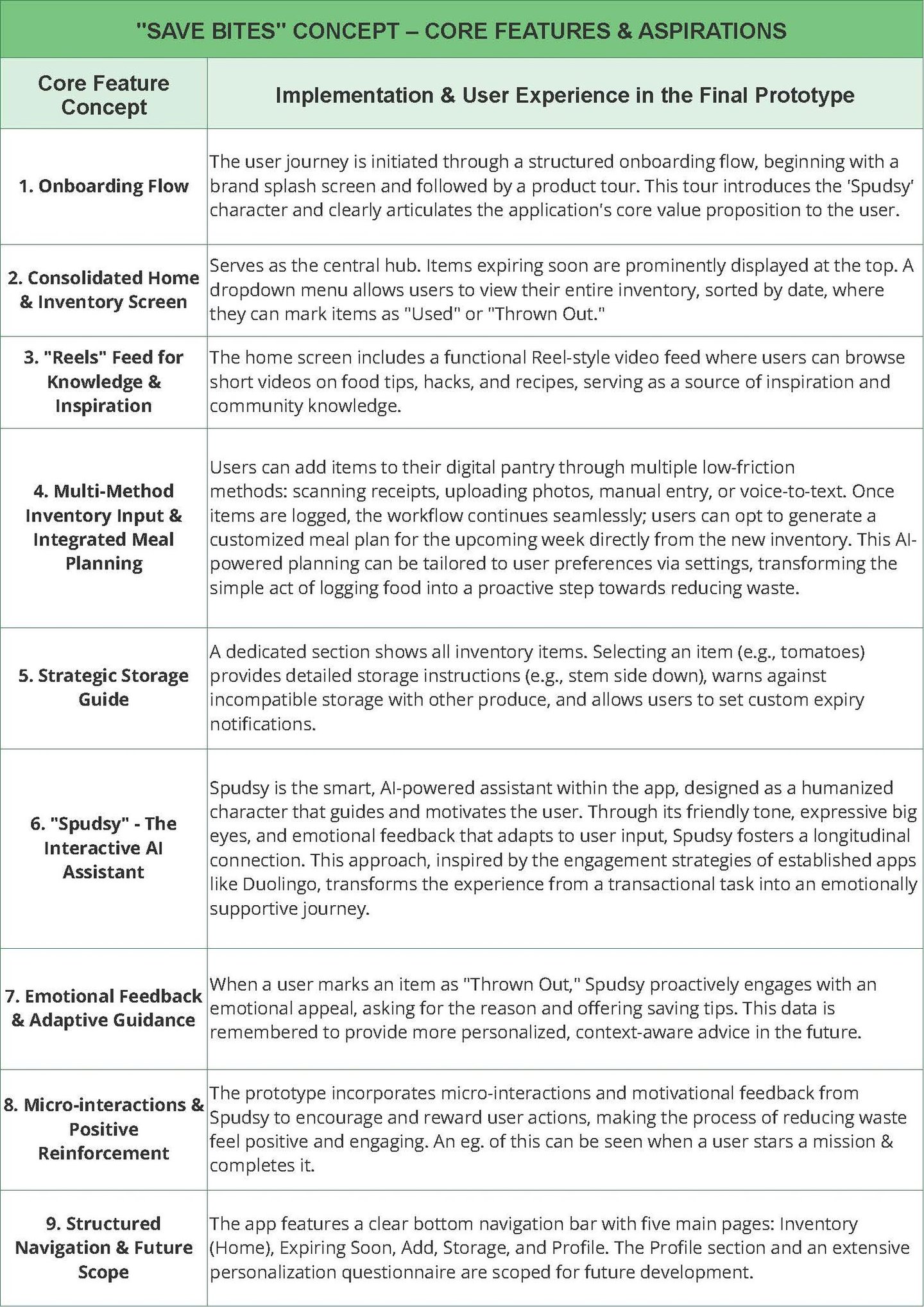

The Solution: "Save Bites"
This research culminated in "Save Bites," a conceptual mobile application designed to reduce household food waste among Gold Coast young adults. It directly translates user-defined problems into a digital service that enhances opportunity and capability, moving beyond awareness to actionable support.
Core Insight: The Guilt-Inaction Paradox
The pivotal finding was a clear intention-behaviour gap. While 91% of users felt guilt and believed food waste was morally wrong, they were hindered by practical barriers: primarily forgetting food and a lack of meal planning. This revealed that the solution lay not in providing more information, but in designing a system that bridges this gap through low-friction, integrated support.
Theoretical Application & Design Strategy
The user-derived themes were analysed through the lenses of the Theory of Planned Behaviour and the COM-B model. This theoretical grounding confirmed that "Save Bites" addresses the core components of behaviour change:
Capability: Through storage guides and portion planning.
Opportunity: With inventory tracking and expiry alerts.
Motivation: Leveraged via a financial savings tracker and value-aligned messaging.
Outcome & Strategic Reflection
Key Learnings & Future Development
This project highlighted that effective service design must target specific, addressable behavioural barriers identified through user research. The immediate next step is the development of a high-fidelity, interactive prototype featuring an animated companion ("Spudsy") to fully test the affective dimension of user engagement. The strategic goal is to partner with government initiatives, such as Australia's National Food Waste Strategy, to pilot the application and measure its real-world impact, transforming this research into a tangible public good.

Created on Figma Make

